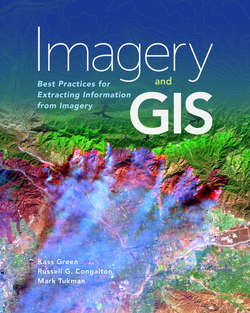Читать книгу Imagery and GIS - Kass Green - Страница 78
На сайте Литреса книга снята с продажи.
Mapping Woody Debris in the Great Brook
ОглавлениеFlows of the Great Brook in Vermont long caused problems for the residents of Plainfield. Over time, bank erosion resulting from natural and anthropogenic forces increased the amount of large woody debris in the stream. During extreme precipitation events, the debris moved downstream, collecting at the first bridge and forming an artificial dam, which diverted water out and over the stream bank causing tens to hundreds of thousands of dollars of damage to the bridge, roads, and surrounding homes. The damage occurred so often that it became economically unviable for the town to continue to make regular repairs. As a result, the town retained a consulting engineering team to evaluate bridge alternatives. Key to the development of alternatives was an estimate of the amount of woody debris predicted to move through the bridge during a storm. While only a dozen or so logs often caused the jam at the bridge it was unclear how much more woody debris there was moving downstream.
The town tried for several years to carry out woody debris inventories of the Great Brook, but the process was slow, cumbersome, costly, and dangerous. Remote sensing approaches, while compelling, were also not feasible because even the best commercial satellite imagery lacked the spatial and temporal resolution required, and imagery acquired through manned flights was far too costly. With funding from the US Department of Transportation and the Vermont Agency of Transportation, the University of Vermont’s (UVM) UAS Team began long-term monitoring of Great Brook starting in December 2014 with a goal of mapping and tracking the movement of woody debris through the 2015 spring flood season. The UVM UAS Team employed the senseFly eBee, a small, lightweight UAS specifically designed for mapping. The workflow for the eBee essentially consists of the operator using flight planning software to specify the flight area and flight parameters (e.g., desired ground resolution and maximum altitude), flight operations, and postprocessing. The eBee flies autonomously, following its preprogrammed flight path, acquiring imagery with the requisite overlap and at the appropriate angle for generating orthorectified imagery. Once the eBee is recovered the imagery is fed into photogrammetric software where it is orthorectified, making it suitable for using in GIS software.
Throughout spring 2015, the UVM UAS Team conducted multiple flights of a three-mile stretch of the Great Brook. Each time, the orthorectified imagery was brought into ArcGIS where technicians digitized the location of all of the woody debris, populated the attribute table with size information, and noted if it had moved or if the size had changed. A dry winter, combined with little in the way of spring participation, resulted in minimal changes to the woody debris conditions in the stream. Then, in July 2015, a highly localized storm dumped nearly half a foot of rain on the area during a Sunday evening. Floodwater moved rapidly down the Great Brook, trees piled up at the bridge, and the residents of Plainfield awoke to find a bridge that was in need of major repairs. The UVM UAS Team responded, collecting imagery of the damaged bridge along with the upstream area of interest. The day after the flight, technicians once again combed through the data and noticed that most of the previously mapped debris was gone, replaced by new debris from the surrounding slopes and upstream. A series of analyses was performed within ArcGIS to summarize the amount of woody debris by stream segment (figure 4.A). The data showed how dynamic the woody debris situation was in the Great Brook: hundreds of pieces of large woody debris were in motion during the flooding, but only a small percentage of them caused the problems at the bridge. Any new bridge would have to be designed to accommodate this reality.
The UAS proved to be a cost-effective, safe, efficient, and rapid way of mapping woody debris in the Great Brook. Without UAS technology, it is highly unlikely that the engineering team would have had the information they needed to complete their study. Fundamentally, the data stemming from the UAS was like any other remotely sensed data. The information gleaned from it, through manual interpretation, was done using methods employed by humans for decades. What was unique was the low-cost, flexible, and rapid response that the UAS offered.
Figure 4.A. UAV images and maps of debris along the Great Brook pre- and post-storm. Source: University of Vermont Spatial Analysis Lab
